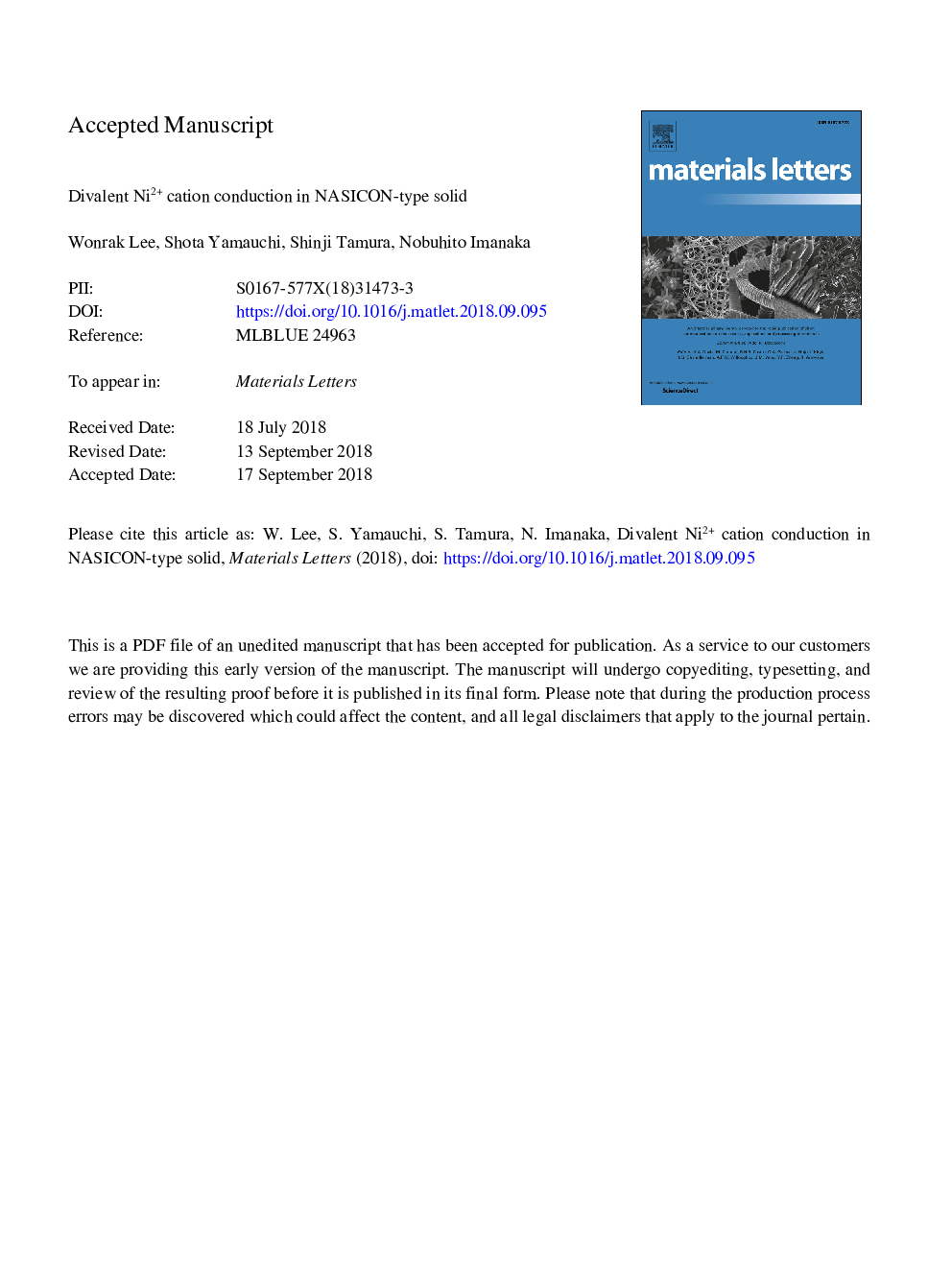| Article ID | Journal | Published Year | Pages | File Type |
|---|---|---|---|---|
| 11026591 | Materials Letters | 2019 | 12 Pages |
Abstract
Divalent Ni2+ cation-conducting solid electrolytes, (NixHf1âx)4/(4â2x)Nb(PO4)3, were successfully developed by introducing Ni2+ cations into a HfNb(PO4)3 solid exhibiting a three-dimensional NASICON-type structure. Although the HfNb(PO4)3 solid has been reported to be purely a Hf4+ ion conductor, the conducting species was changed to the divalent Ni2+ cation upon Ni2+ doping, due to the facile migration of lower-valence ions in the rigid crystal lattice. In addition, by selecting the well-ordered NASICON-type structure as the mother crystal, the (NixHf1âx)4/(4â2x)Nb(PO4)3 solid electrolytes exhibited lower activation energies and higher Ni2+ cation conductivities than a previously reported NiZr4(PO4)6 solid with the β-Fe2(SO4)3-type structure. Among the (NixHf1âx)4/(4â2x)Nb(PO4)3 solids, (Ni0.06Hf0.94)4/3.88Nb(PO4)3 (xâ¯=â¯0.06) showed the highest Ni2+ ion conductivity, of 2.27â¯Ãâ¯10â4 S·cmâ1 at 600â¯Â°C, which is ca. 23 times higher than that of the NiZr4(PO4)6 solid.
Related Topics
Physical Sciences and Engineering
Materials Science
Nanotechnology
Authors
Wonrak Lee, Shota Yamauchi, Shinji Tamura, Nobuhito Imanaka,
